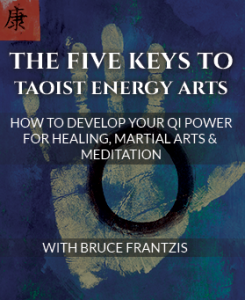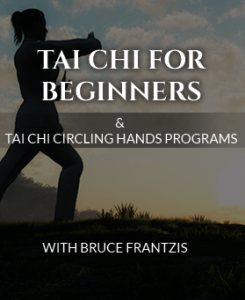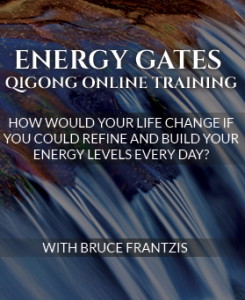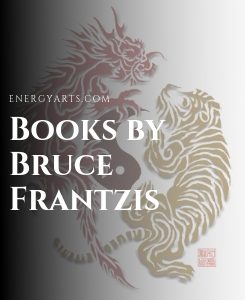Western and Taoist Concepts of Exercise
Western paradigms mistakenly lead people to believe that the only way to improve health is through high-intensity, high-impact aerobic exercises. Many doctors and health websites advocate aerobics for strengthening your heart and lungs, using oxygen more efficiently, controlling blood glucose levels and boosting the immune system. Many doctors recommend jogging or bicycle riding for people that have suffered heart attacks.
These ideas persist despite the fact that many clinical studies show that low-impact, low-intensity exercises—such as tai chi—can have the same positive affects on physical health as aerobics or high-intensity sports. Tai chi and other low-impact exercises are equally effective as aerobics in improving circulation, decreasing blood pressure and increasing oxygen efficiency.
Tai chi is extremely effective in improving physical balance in the elderly, a claim virtually no high-intensity aerobic exercise makes.
One of the major values of low-impact exercises is that people of any body type and age can do them without jarring or damaging their joints. Tai chi can be practiced by people who are ill with chronic diseases, including asthma, arthritis or diabetes, which often limits the types of exercise they can do.
Health versus Fitness
Traditional Chinese Medicine has long made a distinction between health and fitness. It defines health as having a state of wellness in which your mind is clear and emotionally balanced (mental health), your body is free from organic illness or injury, and you experience strong vitality and a sense of well-being. Fitness is more commonly associated with the superior external performance of high-performance athletics.
In the West, a person who is considered to be fit may be able to do 100 or more push-ups, run a marathon, have a beautiful muscular physique and yet not be healthy under their tight abs. He or she may have a bad back, damaged joints, liver problems, unbalanced emotions, an inability to handle stress, lack of libido and other sexual weaknesses. In China, that person would be considered fit, but not healthy.
Conversely, in the West, someone would not be considered fit if they looked frail, dumpy or fat, were unable to run a few hundred meters, or did not have physically powerful muscles. Yet that person may be quite healthy. He or she may have a strong back, good joints and blood circulation, be emotionally balanced, not have internal organ or central nervous system problems, engage in all of life’s normal activities comfortably and with stamina, have a fulfilling sex life and be able to handle immense stress in a relaxed way.
Thus, you could be considered fit and yet not healthy, or healthy and not fit. In China, the goal is to be healthy and fit: Bagua and tai chi help you achieve both.
The Ideal Body
The Western ideal of a healthy person is the Olympian athlete, standing tall and fully muscled. The Taoists’ ideal is a baby. Consider the differences in energy. Who has more life energy: An athlete or a baby? The answer is a baby.
Research has shown that no athlete can continuously mimic a baby’s motions as it randomly moves and plays. It doesn’t take long before the athlete becomes exhausted. Now consider the difference in body types. The Olympian athlete’s body is straight, tall and hard. Babies are round, soft and very relaxed. Yet babies are not weak: Pound for pound they have immense, but relaxed strength and stamina.
If you’re a parent you know how fast they can wear you out.
The more relaxed you are, the more energy you have.
Taoists developed qigong exercises to help people achieve the stamina, relaxation and flexibility of a baby. Qigong shares with Chinese medicine the perspective that health is not determined by the strength of your muscles, but by the strength of your chi. If your chi is abundant, balanced and flowing fully and evenly throughout your body—especially within and between your internal organs—then you will enjoy good health. Bagua and tai chi make these useful goals accessible to everyone.
Wang Shu Jin: Fit, Fast, Fluid…and Fat!
Wang Shu Jing was my first bagua teacher. I began studying with him in 1968 at the end of my freshman year of college in Japan. When I first met Wang, he was nearly 70-years old and dramatically overweight. He looked to me in the neighborhood of 300 pounds, a number thrown around very frequently in his later years. Yet he could move fast and fluidly, as if he were in his twenties or thirties. I found this rather exceptional.
After getting to know Wang and seeing and feeling everything Wang could do inside his body, my standard American ideas of what a big fat guy could not do simply went out the window. Here was this 70-year-old person, huge as a house, who was really strong and who could move like lightning. At my young age, he seemed almost superhuman. At the time, I was about 5’10” and a relatively thin 160 pounds.
However, in my mid-thirties, I ballooned after a car accident that nearly broke my back. Then in my fifties, I had other car accidents that led to my gaining even more weight. So, it was very useful to have trained with Wang and understand that having a big body was not an obstacle to having a good and healthy life.
The Primary Positive Effects of Training
Here are just a few of the many benefits of tai chi and bagua training:
Release and Relax the Nervous System
Anxiety and stress that leach into most people are due to habits of tension that lie deeply within the nerves of the body. Tension not only defeats relaxation, but also, when not released it perpetuates and exacerbates the inability to relax. It’s a negative feedback loop.
You can work/play/interact with others from a deep sense of relaxation and awareness.
Exercise and Tone All of Your Small and Large Muscles, Tendons and Ligaments
The goal is to open up space in your body and exercise everything within those spaces. This makes sure that blood flow can reach all the nooks and crannies, particularly in and around all your internal organs.
Where there is blood, there is life.
Blood is the portal that delivers the nutrients your body needs for healing and maintaining wellness.
Optimally Move All of Your Bodily Fluids
This includes blood, lymph, synovial fluid between your joints, spinal fluids, the fluids of the brain, and those within and between your internal organs. The body works best when it has a constant interchange of fluids in and out of and between all its internal systems. Since our bodies primarily consist of fluids, a fundamental principle of bagua and tai chi is getting these fluids to pump throughout the body with a very strong, regular and balanced flow.
This allows the body to work optimally and prevents weaknesses, particularly in your internal organs. Many exercises that contract your muscles move some fluids well, but not others. They may be great for your cardiovascular system, but may not be as effective for your liver, spleen and kidneys.
Bagua and tai chi positively affect the fluid interchanges that occur throughout the body by creating direct internal pressures throughout the body, especially into, out of and around your internal organs. Bagua and tai chi train you to move and turn from the kwa—also referred to as the “bikini fold” or “inguinal crease”—as well as moving your arms and shoulders while keeping the back of your knees and the armpits open.
These are the areas where you find the majority of the lymph nodes in your body.
Bagua and tai chi trains you to deliberately increase the flow of lymph, which helps strengthen your immune system.
Bagua and tai chi train you to contract and expand the spaces inside your joints, which strengthens the flow of synovial fluid and helps prevent arthritic conditions.
Twist the Muscles and Other Soft Tissues as You Move
This facilitates the spiraling of chi and gives you a stronger flow of energy. The twisting of the tissues and muscles in bagua and tai chi simply means that the tissues of the body are constantly turning left and right. Most exercises work on the forward and backward longitudinal movement of bodily muscles and tissues, rather than focusing on the left and right lateral twisting movements as do bagua and tai chi.
Twisting of the tissues in the arms and the legs eventually twists and moves the ligaments attached to the spine. Such twisting provides a constant massage of the internal organs and can help to relieve and prevent minor back problems. Back and neck issues are one of the most common reasons for doctor visits. Twisting facilitates the way that energy naturally spirals through your body.
The spiral is the universal movement of all forms of organic life. Natural organisms don’t move or grow in straight lines, but rather in spirals. Chi also moves through your body in spirals. When infants crawl, their arms and legs constantly twist, which is how they get moving. They flip around from their belly or back by twisting the insides of their hips and belly. However, as children grow older and copy their stiffer, straighter adult role models, they lose this twisting action.
This in turn causes them to lose the incredible abundant energy they had as infants. Bagua and tai chi emphasize twisting the tissues and spiraling chi to help you regain such energetic capacities.
Increase Your Body’s Elasticity
The human body—contrary to popular opinion—is not held up by bones. It is held upright by a series of ligaments that are actually much stronger than bones. What connects your foot to your belly to your neck is either a series of interconnecting ligaments or fascia that are connected to ligaments.
Bagua and tai chi train you to release these ligaments and fascia so that you have as much unrestricted movement as possible. In doing so, they become incredibly elastic, like a rubber band. This quality is found in babies. The next time you encounter a baby, pull their hands, arms and legs (gently now!) and observe this rubber band quality; their limbs are soft and springy.
Bagua and tai chi seek to recreate elastic qualities inside you.
Elasticity significantly increases the range of motion in your joints, spine and internal organs. It allows optimum movement within the joints and between the vertebrae of the spine. Constantly pulling and releasing the ligaments inside your body causes the natural and healthy movement of internal organs. It also massages them and makes them springier. Together these actions enhance blood and fluid flows, which are important factors in determining your health. Most people don’t even think about their fluids. As elasticity increases, so too does the spiraling of energy.
This movement causes the joints and spinal vertebrae to constantly pulse so that the spaces within them continually shrink and grow. Pulsing stimulates the flow of fluids inside the joints and between and within your vertebrae. Chinese call this pulsing action opening and closing. This rhythmic movement keeps the soft tissues of the joints flexible and elastic. Arthritis and the loss of mobility and flexibility can make you prone to injury, or harden the ligaments. In contrast, keeping the body elastic and the fluids moving strongly in your joints helps you avoid many of the problems associated with aging.
Teach Your Body to Flow
Bagua and tai chi train the entire body to move in a flowing, coordinated and continuous manner without abrupt starts or stops. Both arts create a smooth continuum of unceasing flow, much like a pendulum.
They promote flow externally in your physical movements and internally within all the parts of your body—organs, ligaments, tendons, tissues, fluids and muscles. Most people start out being very clunky and jerky with their movements: starting, stopping, freezing and beginning again.
Bagua and tai chi training helps you to learn how to flow smoothly.
Ultimately, the ability to find the flow requires that all parts of your body—especially your nerves—are very relaxed. Relaxation is necessary so that the flow of your fluids can be fairly smooth and circulate in an unrestricted way throughout your body. Chi flow in the body must also be reasonably smooth and balanced. This flow rarely comes from pure physical athleticism.
Enable Whole-body Movement
Almost all athletes want to develop whole-body movement. However, what they’re usually after is having the arms, shoulders and torso move together. The whole-body movements of bagua and tai chi are primarily generated from deep inside your body—reaching from the tips of your toes and fingers to the crown of your head.
Tai chi movements are initiated from deep inside the hips and belly, and move through all the systems from the toes to fingers to head.
Bagua movements are initiated from the feet.
Make the Body Soft and Strong
Bagua and tai chi train your body to move in any direction completely unimpeded. Your body can become like a piece of silk that moves absolutely smoothly as it flutters in the wind. Practicing bagua and tai chi can make your arms very heavy, literally with the strength of iron.
Yet paradoxically, when they move with almost lightning speed, they look and feel virtually weightless and light. All these qualities become simultaneously trained inside you as you practice bagua and tai chi.
Their positive, regenerating effects are like circles coming in and moving out of circles that increase in size and strength. As your nervous system relaxes, the other body systems connected to your nervous system are continually upgraded, which in turn helps relax the nerves even more.
Get Healthy, Then Fit
Before you train for fitness in bagua or tai chi, you must first become healthy.
If you are exceptionally healthy and fit, then you may use the skills you acquire from fitness-orientated bagua or tai chi to excel in high performance, whether in business, athletics, energy arts or anything on which you focus your intent.






Bruce Frantzis is a high level teacher and is a lineal descendent of various masters.
I, on the other hand have picked up T’ai Chi, Ba Gua and Hsing-I over the past half century or so and am nobody’s disciple. Still, at 73, I can still move quite well and have managed to mitigate many years of beer, pipe tobacco and whiskey by my practice.
Relax, sink, and practice – it’s still working for me, although I’m sure I don’t make anywhere as much money as Mr Frantzis….
Nowadays be good and “healthy” in martial arts is to be on MMA. These guys are the perfect example of strong people with bad health. They ruin their bodies quick.
Excellent article. Simple and on point though, so everyone can understand. Well done friend and thank you cuz i can spread the word.
Greetings.